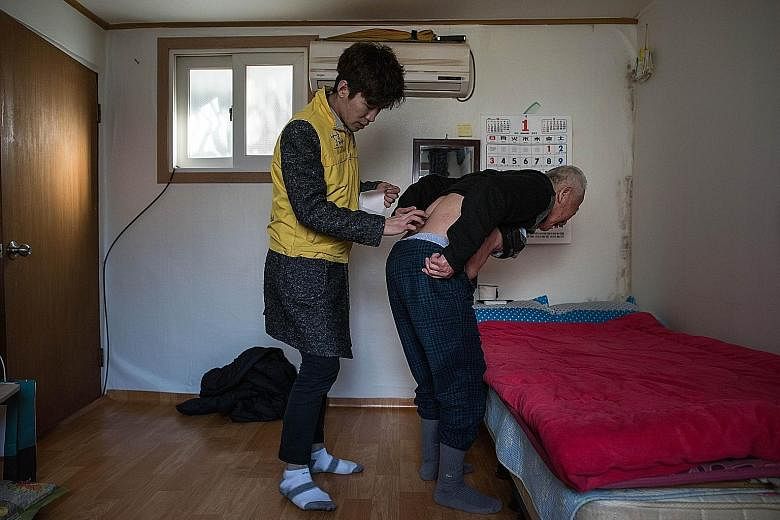SEOUL • The number of one-person households in South Korea surged nearly eightfold in the past 30 years amid low birth rates and a rapidly ageing population.
Such households are on course to become the most common household structure in the next 20 years, latest statistics show.
In a report released yesterday, the Korea Institute for Health and Social Affairs (KIHSA) said the number of single-person households was estimated at 5.06 million last year, a 7.7-fold surge from 661,000 in 1985.
The ratio of one-person households rose from 6.9 per cent to 27.1 per cent during the same period, and is expected to reach 34.3 per cent by 2035, said the report on changes in family, marriage and childbirth.
The growth in the number of such households is attributed to various factors including an increasing number of young singles in their 20s and 30s who leave their parents' homes to live independently, people marrying late or not marrying at all, reported Korea Times. There are also those who live alone after getting divorced, and widowed seniors who live alone.
Singapore, too, has witnessed an increase in the number of single- person households. The 2011 Future Of Families To 2030 report predicts that around 40 per cent of all households will be one-person households. In 2014, such households constituted 11.2 per cent of all resident households in Singapore, up from 8.2 per cent in 2000.
In South Korea, changes to the family structure have contributed to better sales for makers of mass-produced lunch box sets.
Sales of these lunch box meals surged a whopping 65 per cent in the first half of last year, compared with the same period in 2014, according to the country's biggest convenience store chain CU, reported news portal BusinessKorea.
LG Electronics and Dongbu Daewoo Electronics have been actively targeting single-person households since last year, with solo-friendly home appliances such as small-load washing machines, robot vacuum cleaners and portable TVs.
Two generations living under the same roof is traditionally the most common type of household in the country. Such households usually comprise a couple and their children, or a childless couple living with their parents.
Two-generation households accounted for 67 per cent of the total in 1985, but had declined to 47.2 per cent last year.
The KIHSA report said the proportion of such households would further fall to 35.9 per cent - only slightly higher than the proportion of single-person units - in 2035.
At the same time, one-generation households, many of which are made up of childless couples, are expected to increase, it added.
Their numbers increased from 916,000 or 9.6 per cent of the total population in 1985 to 3,583,000 or 19.2 per cent of the total last year.
South Korea's birth rate of 1.205 children per woman is the lowest among the rich nations of the Organisation for Economic Cooperation and Development.
The country is also ageing rapidly. South Koreans aged 65 and above make up 13 per cent of the population, and that figure is expected to rise to 40 per cent by 2060.
Asia's fourth-largest economy will also see its working-age population start to shrink next year.
A sluggish economy that has pushed up youth unemployment has led to young people delaying marriage and child-bearing. The average age of first-time South Korean mothers is the world's highest, at 30.7, says Statistics Korea.
Researchers have also found a link between the type of household and the number of children a couple have. Couples who live with one or both sets of parents are more productive - baby-wise - than those who live on their own, reported Korea Herald.
KIHSA researchers found that the average number of children women have in their child-bearing years (15 to 49) was 1.75.
But the figure showed wide fluctuation when compared across the various types of households, with the average reaching 2 for families where three generations lived together, 1.9 for two-generation households, and only 0.58 for one-generation households.
KOREA HERALD/ASIA NEWS NETWORK, REUTERS

